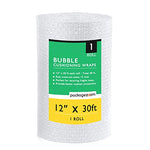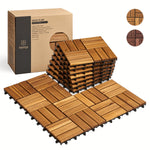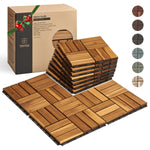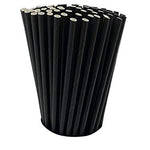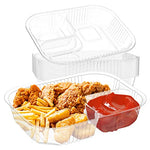You have no items in your shopping cart.
The Erlenmeyer flask, a staple in laboratories around the world, is an essential tool used by scientists and researchers to perform a wide range of experiments and analyses. Its unique design and versatility make it indispensable in various scientific disciplines. In this comprehensive article, we delve deep into the world of the Erlenmeyer flask, exploring its history, structure, applications, and maintenance, while also providing expert insights and first-hand experiences to showcase the significance of this remarkable laboratory apparatus.
The Erlenmeyer Flask: An Overview
The Erlenmeyer flask, also known as a conical flask or E-flask, is a cylindrical laboratory vessel with a conical shape, featuring a flat bottom and a narrow neck. The combination of these features makes it an invaluable tool for various laboratory processes, such as mixing, heating, and storing chemicals. Its design ensures efficient mixing and minimizes the risk of spills, making it a preferred choice for many scientists.
History of the Erlenmeyer Flask
The Erlenmeyer flask's invention is attributed to the German chemist Emil Erlenmeyer, who designed it in the mid-19th century. He aimed to create a versatile container that could facilitate a range of chemical reactions while minimizing the loss of volatile substances. Over the years, the flask's design has undergone minor modifications, but its fundamental shape and functionality have remained largely unchanged.
The Design of Erlenmeyer Flask
The Erlenmeyer flask's distinct shape is integral to its widespread use in laboratories. It typically comprises three main parts:
1. Body and Base
The body of the Erlenmeyer flask features a conical shape, enabling effective mixing and swirling of liquids during chemical reactions. The flat bottom provides stability, preventing the flask from tipping over during use.
2. Neck and Rim
The neck of the flask is narrower than the body, serving several purposes. It reduces the risk of splashes during pouring and allows the attachment of stoppers, tubing, or other accessories. The rim facilitates easy handling and pouring of liquids.
3. Graduation Marks
Many Erlenmeyer flasks come with graduation marks, allowing scientists to measure the volume of liquids accurately. This feature is especially useful when preparing solutions or conducting experiments that require precise measurements.
Applications of Erlenmeyer Flask
The Erlenmeyer flask finds applications in a wide array of scientific fields. Its versatility and functionality have made it an indispensable tool in:
1. Chemistry
In chemistry laboratories, Erlenmeyer flasks are used for various purposes, including mixing solutions, conducting titrations, and preparing reagents. Their conical shape facilitates efficient mixing and minimizes the risk of spills during reactions.
2. Biology and Biochemistry
Biologists and biochemists utilize Erlenmeyer flasks for cell culture, media preparation, and various biochemical assays. The flask's design is ideal for providing a stable environment for cell growth and maintaining homogeneous mixtures.
3. Pharmaceutical Research
In pharmaceutical research, Erlenmeyer flasks are employed for drug formulation, dissolution testing, and sample preparation. Their ease of use and accuracy in volume measurements make them invaluable in quality control and research labs.
4. Environmental Science
Environmental scientists use Erlenmeyer flasks for water and soil sample analysis, as well as for preparing standard solutions for analytical instruments. The flasks' graduated markings enable precise measurement of sample volumes.
5. Teaching and Education
Erlenmeyer flasks are an integral part of science education. They are commonly used in classrooms and educational laboratories to demonstrate various chemical reactions and concepts, fostering students' understanding of scientific principles.
Maintaining Erlenmeyer Flasks for Longevity
Proper care and maintenance of Erlenmeyer flasks are essential to ensure their longevity and accuracy in scientific experiments. Follow these guidelines to keep your flasks in top condition:
1. Thorough Cleaning
After each use, clean the Erlenmeyer flask with warm soapy water and rinse it thoroughly. Avoid using abrasive materials that could scratch the glass.
2. Drying and Storage
Allow the flask to air dry completely before storing it. Store flasks upside down to prevent dust and debris from settling inside.
3. Handling with Care
Handle Erlenmeyer flasks with care to avoid accidental breakage. Avoid placing hot flasks on cold surfaces, as sudden temperature changes may cause cracks.
4. Regular Inspections
Periodically inspect flasks for any signs of damage, such as chips or cracks. Damaged flasks should be discarded to prevent accidents during use.
5. Avoid Extreme Conditions
Avoid subjecting Erlenmeyer flasks to extreme temperatures or sudden temperature changes, as this can compromise their structural integrity.
Common FAQs About Erlenmeyer Flasks
Q: Can I use an Erlenmeyer flask for direct heating on a flame? A: While Erlenmeyer flasks can withstand some degree of direct heating, it is generally recommended to use a Bunsen burner or a heat source with a wire gauze to distribute the heat evenly.
Q: Can I use an Erlenmeyer flask for long-term storage of volatile substances? A: Erlenmeyer flasks are not ideal for long-term storage of volatile chemicals, as their narrow necks may not provide an airtight seal. Consider using bottles with tight-fitting caps for prolonged storage.
Q: Can I autoclave an Erlenmeyer flask? A: Yes, Erlenmeyer flasks made of borosilicate glass can withstand autoclaving. However, ensure that the flask is completely dry before autoclaving to prevent breakage.
Q: Are there Erlenmeyer flasks with non-slip bases available? A: Yes, some Erlenmeyer flasks come with non-slip bases, providing additional stability during handling and preventing accidental spills.
Q: Can I use a magnetic stir bar in an Erlenmeyer flask? A: Yes, Erlenmeyer flasks are compatible with magnetic stir bars, making them suitable for stirring and mixing solutions.
Q: How do I choose the right size of Erlenmeyer flask for my experiments? A: The size of the flask depends on the volume of the liquid you need to handle. Choose a flask with a capacity slightly larger than your intended volume to prevent spillage.
The Erlenmeyer flask stands as a testament to the ingenuity of scientific instrument design. Its simple yet effective shape has revolutionized laboratory processes across various scientific fields, enhancing the precision and safety of experiments. Whether it's a chemistry lab, a pharmaceutical research facility, or a biology classroom, the Erlenmeyer flask plays a pivotal role in advancing scientific knowledge and discovery.



